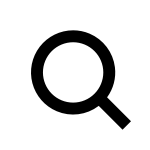Jef Verheyen - ARCHIVE
 (c)photo: Gerald Dauphin, Collection Fotomuseum Antwerpen
(c)photo: Gerald Dauphin, Collection Fotomuseum Antwerpen
This page offers a selective glimpse into the Jef Verheyen (1932-1984) archive, painting a picture of the artist’s practice and the nature of the archive. It is a snapshot, so to speak, of the international art scene of the latter half of the 20th century, a view illuminating the evolution of an artist exploring the frontier divide between modern painting and conceptual art.
Digitisation, entry, and description of the complete archive material began in 2019. For example, the database has been enhanced with over 1,300 archival items bequeathed by the artist. In addition to Verheyen’s works on paper (ca. 200), the archive mainly contains notebooks and sketchbooks (ca. 40), essay manuscripts (ca. 200), correspondence (ca. 400), photographs (ca. 1,700), posters (ca. 85), invitations (ca. 200), writings about the artist (ca. 50), press articles (ca. 300), publications (ca. 200), and official documents (ca. 40).
The newly accessible selection is intended to make the archive’s most representative pieces available for research and education. This page is continually updated with new material.
Jef Verheyen - Artist's Writings and Theory
For Jef Verheyen, writing was nearly as critical as painting. He was a man of images but also of words and ideas. His art – painting – was rooted in the conceptual. Every handwritten draft of his published essays was saved, along with notes on other theoretical musings. This collection includes the groundwork and first ruminations of manifestos such as Essentialisme (1958), Pour une peinture non plastique (1959), and Nieuwe Vlaamse School (1960).
Categories:
- Manuscripts
- Notes
- Sketches
- Theory writings (unpublished)
(in the Jef Verheyen Archive: 194 items)
Jef Verheyen - Ateliers
Impressions of the artist's different ateliers
Timeline:
1950 – 1953
Kattenstraat, Antwerp (BE)
1953 (end)
Sint-Antoniusstraat, Antwerp (BE)
1954 – 1961
‘Atelier 14’, Rubensstraat 14, Antwerp (BE)
1958 – 1959 (Summer)
Tempelierenhof, Weert (BE)
1959 – 1961
Lange Noordstraat 1, Antwerp (BE)
May 1961
Charlottelei, Antwerp (BE)
November 1961 – May 1962
Raapstraat, Antwerp (BE)
Schaliënstraat, Antwerp (BE)
1966 – 1974
‘Oranjehuis’, Hoogstraat 69, Antwerp (BE)
1974 – 1984
‘Les Talons’, Saint-Saturnin-lès-Apt, Vaucluse, Provence (FR)
1978 – 1984
‘Ten Bosch’, Buckbossen, Heist-op-den-Berg (BE)
Jef Verheyen - Ceramics
Jef Verheyen - Monographic exhibition catalogues
Verheyen compiled his own exhibition catalogues just as he did with his posters. The archive’s myriad maquettes bear witness to this. This overview covers most solo exhibition publications during and after the artist’s lifetime.
Jef Verheyen - Notebooks and Sketchbooks
Little notebooks were Jef Verheyen’s companions wherever he went: at various studios, during exhibitions, and on trips to Italy, Spain, France, Germany, and South America. They house long-winded ramblings, stream of consciousness, and accounts of encounters and events. And so, these booklets help reveal the artist’s growing network. But his other sketchbooks are littered and brimming with sketches and preliminary studies, with Verheyen’s notes in the margins to inform and enlighten.
Jef Verheyen - Photographs
The artist’s archive contains an astonishing number of photographs. This is due, in part, to Jef Verheyen’s personal relationship with photographers such as Frank Philippi, Filip Tas, and Gérald Dauphin. The collection is populated by installation and vernissage photos, artist portraits, travel and studio photos, and reproductions of paintings, often in black and white. These photographs are instrumental in identifying the artist’s artworks, events, and contacts.
Jef Verheyen - Press Articles
Jef Verheyen carefully preserved every press article. The earliest articles date back to 1955, telling of the artist’s ceramics period and his wife, Dani Franque. The articles also appear in several languages, in domestic and foreign newspapers and magazines, sometimes running for several pages. Several reviews bear witness to Verheyen’s key retrospective and group exhibitions, but they also shed light on demonstrations and events like G 58 Hessenhuis, the Nieuwe Vlaamse School [the New Flemish School], and the Venice Biennale. Posthumous press articles up to the present day are also stored in the Jef Verheyen Archive.
Jef Verheyen - Sketch Drawings and Notes
Loose sketches, diagrams, and drawings reveal insights into the artist’s finished paintings and his theories, such as Afnemend licht is toenemend donker. Toenemend licht is afnemend donker. [Dwindling light is expanding darkness. Expanding light is dwindling darkness.] This collection of sketches contains references, calculations, colour studies, and new ideas, underscoring Jef Verheyen’s calibre as a contemplative artist.
Jef Verheyen - Solo Exhibitions Posters
In post-war Europe, posters were an essential part of the exhibition business. This collection opens up access to posters from most of Jef Verheyen’s solo exhibitions. And aside from posthumous examples, all posters were designed by the artist’s own hand. They display a work, a sketch, a signature, and even a portrait of the artist as a judoka.
Jef Verheyen - Travel Notes
Travel was inherently meaningful to Verheyen. He travelled to immerse himself in architecture’s form language and lose himself in the singular qualities of light. Jef Verheyen's travel book, Op zoek naar de magische kracht [The quest for magical power], is a particularly potent testament to this. The quest for light that alters wherever you go led him to places like Venice and Brazil and eventually found him in Provence, where he spent the last chapter of his life.
Jef Verheyen - Writings about the Artist
Various authors, critics, and curators from Belgium and abroad penned this selection of writings. They are profound sources for studying Jef Verheyen’s life and work. Each written from a different angle, they provide an eclectic palette of literature on the artist.
